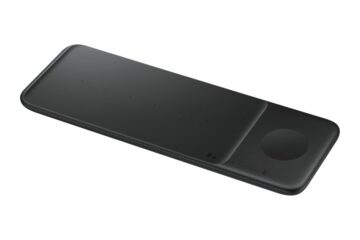It hasn’t been easy being Huawei since last year. The company was added to the US Department of Commerce’s Bureau of Industry and Security Entity List in May 2019 as it was accused of lying about its ties to the Chinese government. It has long been the position of the United States that Huawei enables the Chinese government to spy on foreign entities through its products.
With Huawei being one of the world’s largest suppliers of telecommunications equipment and one of the fastest-growing smartphone companies, even if its phones never made it to the US, the grounds had been laid to drop the banhammer on this Chinese titan. President Trump then signed an executive order effectively banning Huawei in the country and also preventing US entities from doing business with it. This was a pretty big blow for Huawei as it meant the company could no longer use Android on its phones. Temporary relief was granted which allowed Huawei to issue Android updates to existing devices.
Huawei’s hands had already been tied. It couldn’t source vital equipment from suppliers in the United States and its new phones couldn’t access Google’s services, which meant that customers who bought a new Huawei phone couldn’t use the Play Store, YouTube, Gmail, Google Maps or any other native Google service on it. This significantly reduced the appeal of its smartphones in the market since Android users can’t really imagine life without these services. The United States also impressed upon its allies across the globe to ban Huawei from 5G rollouts in their countries. Australia was among the first to follow through and while the EU didn’t ban the company, it advised countries to restrict Huawei’s access to their core networks. The UK eventually banned Huawei from its 5G rollout as well and also ordered the removal of Huawei network gear from telecom networks in the country. Samsung is in talks with the UK government to step in as the replacement.
The United States has since further tightened the export controls on Huawei and not reviewed the temporary reprieve provided earlier, meaning that it may not be possible for older handsets to receive Android updates. However, President Trump’s latest Huawei sanctions have made it impossible for the company to get chips for its devices. Under these sanctions, semiconductor manufacturers that use American software and technology in their operations are not allowed to sell their products to Huawei unless they first obtain a license from the United States.
Samsung sells a lot of components to Huawei but it’s no longer able to supply DRAM chips, NAND flash chips and OLED displays. It has submitted a request to the US Department of Commerce for a licence to conduct business with Huawei but there’s no saying when or even if one would be granted. It does seem unlikely since the US doesn’t seem to be backing down from its policy of applying maximum pressure on Huawei. This entire ordeal has presented Samsung with an opportunity to push its 5G network equipment in the US and elsewhere. It recently bagged a $6.6 billion contract from Verizon for equipment.
Things have quickly gone from bad to worse for Huawei. Since the majority of its Kirin processors are made by TSMC, which has to abide by US sanctions, it can no longer produce Huawei’s chips. The company has been working with Chinese chipmaker SMIC but its process technology isn’t advanced enough to make flagship chips. Huawei tends to source mid-range chipsets from MediaTek for its affordable phones but since it’s also abiding by the sanctions, it’s cut off from there as well. It also can’t source RAM from Samsung and SK Hynix, two of the largest memory suppliers. Sony has halted the sale of image sensors while display supplies from LG and Samsung are already suspended but at least it does have some Chinese display makers to rely on.
Huawei ships millions of phones so it does purchase a lot of components from these suppliers. Samsung does make a lot of money from its components business so while it will obviously not want this revenue stream to remain cut off for long, it does have the perfect opportunity to capitalize on the troubles of its biggest rivals. Before the Chinese giant found itself in a world of trouble, it was relentlessly chasing after Samsung and Apple to establish itself as the dominant manufacturer. Huawei was hitting Samsung where it hurt the most, it launched aggressively priced models in key markets and launched flagship phones that gave tough competition to the Galaxy S and Note series. These troubles also didn’t allow Huawei to put its Mate X foldable phone on the market, giving an empty playing field to the Galaxy Fold. It’s quite possible that Huawei would have launched multiple foldables by now to give tough competition to Samsung had it not been fighting for its survival.
Apple has benefited from Huawei’s troubles as well. While the latter never got to release its smartphones in the United States, Huawei’s high-end phones went toe-to-toe with iPhones in lucrative markets across Europe and Asia. It’s one of the few regions that still shows growth in high-end smartphone shipments so the pressure is off the fruit company as well since it only has to worry about Samsung now.
Huawei is also going to be hurt by the loss of consumer confidence. Unless you live in China, you wouldn’t want to use an Android phone that doesn’t have access to services like Google Maps, YouTube, Google Play Store, etc. You wouldn’t want the uncertainty about Android updates either. ZTE has already suffered similar consequences when it was brought to the brink of bankruptcy by US sanctions. If this can happen to Huawei, one of the most influential Chinese mobile companies, what chance do other smartphone manufacturers have?
We might see a ripple effect of Huawei’s ordeal on the industry. More customers are likely to shun devices from Chinese manufacturers, particularly if they have bought into the claims that Chinese tech companies allow their government to spy on users, or just because they don’t want to end up with the short end of the stick if the US government decides to go after another target.
Samsung faces no such risks as similar geopolitical factors don’t come into play between the United States and South Korea. The two countries are close allies and being one of South Korea’s largest conglomerates, Samsung would obviously not want to upset the apple cart by getting on the wrong side of the United States. This is the perfect opportunity for Samsung to claw back the market share that Huawei took from it in highly lucrative markets like India and even strike on its home ground in China with its foldable phones.
The coming quarters will reveal the extent of Huawei’s misery as its smartphone shipments are projected to dry up once the components it may have stockpiled run out and it doesn’t get relief from the United States. Perhaps its fortunes might change after the upcoming elections in the United States but only if there’s a change in the occupant of the White House. If the incumbent remains, the storm may rage on for Huawei.
The post Trump’s latest Huawei sanctions are a gift to Samsung and Apple appeared first on SamMobile.
from SamMobile https://ift.tt/3c7naPw
via
IFTTT







